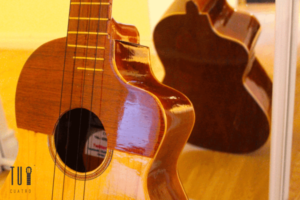Reentrant tuning sets certain instruments apart because the strings don’t ascend or descend in pitch order. In the modern era, guitars influence many instruments, so most of them follow a sequential tuning. However, centuries ago, instruments with reentrant tuning were common and left us a rich repertoire of music.
The Venezuelan Cuatro is a small four‑stringed instrument with a standard tuning of A–D–F#–B. The B string is tuned an octave lower than expected, creating the reentrant effect that gives the Cuatro its lively, ringing tone.

Learn the Cuatro with TuCuatro
TuCuatro is an online education platform that helps students learn folkloric and exotic instruments. It offers structured courses, instructional videos, and virtual support from professional musicians and e‑learning specialists. The curriculum focuses on the Venezuelan Cuatro but also includes the ukulele, bandola llanera, and cavaquinho. Through TuCuatro’s easy‑to‑follow lessons, beginners and experienced players alike can improve their skills at their own pace.
As an education system, TuCuatro combines step‑by‑step lessons with accessible resources. Students can watch videos, follow interactive exercises, and ask questions in the community. The goal is to make learning the Cuatro and related instruments accessible worldwide. Whether you want to strum simple songs or master advanced techniques, TuCuatro guides you through the journey.
This simple but practical solution made the Cuatro one of the few instruments in the world with reentrant tuning. It has become an iconic instrument in Venezuelan music and has gained popularity worldwide through performances by master players like Edward Ramirez who blend traditional styles with contemporary innovation.
In conclusion, while its reentrant tuning may be considered unique today compared to modern-day musical instruments; history reminds us that it was common centuries ago. The Cuatro shares this curious characteristic with other interesting instruments, and it continues to be a celebrated instrument for its distinct sound and rich history.







































